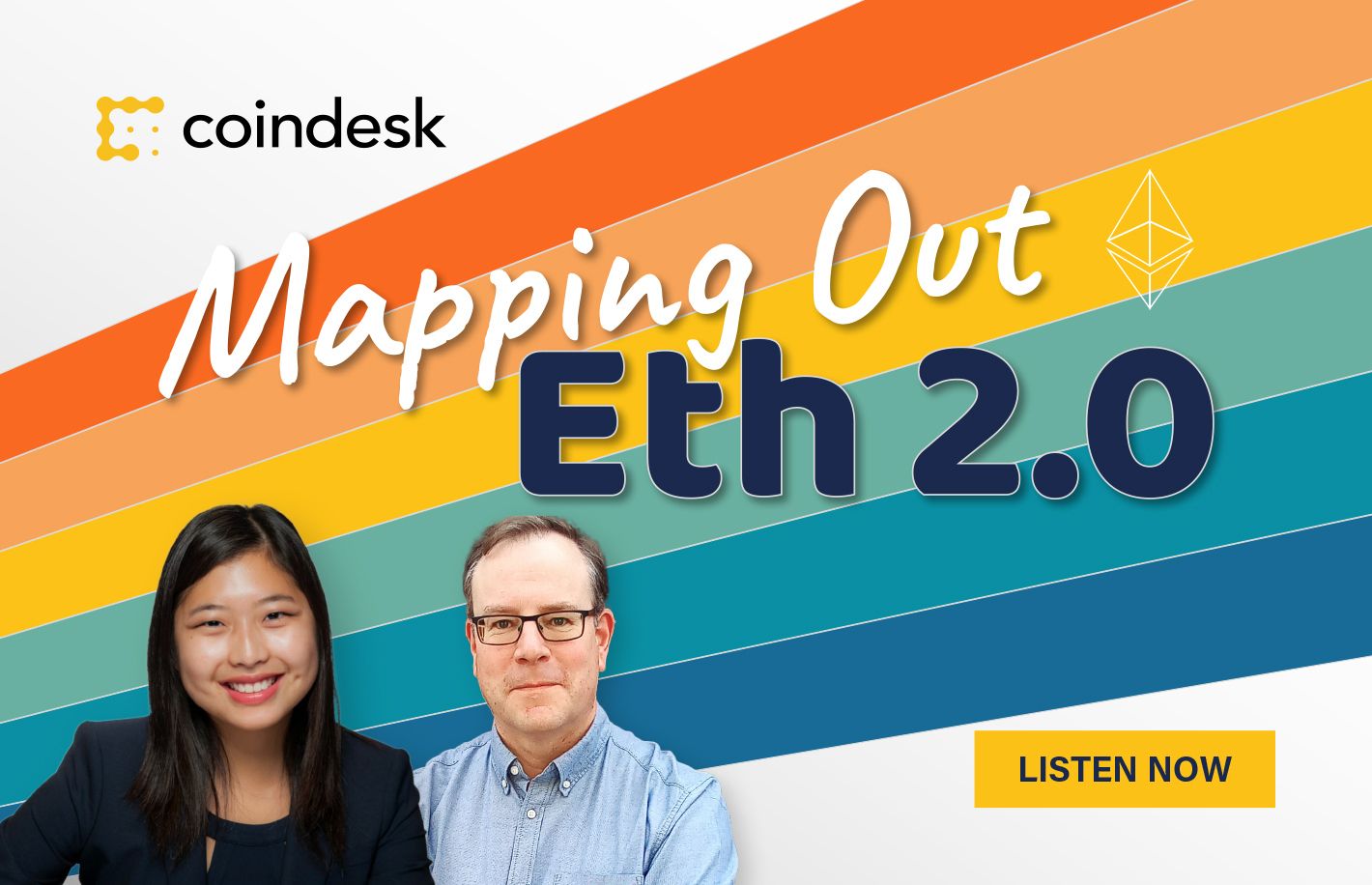In this week’s episode, CoinDesk’s Christine Kim and Consensys’ Ben Edgington talk about what caused 70% of validators on Ethereum 2.0 to stop producing blocks on the network and the important takeaways for protocol developers in light of this event. They also discuss the updated roadmap for the Eth 2.0 upgrade as outlined by Vitalik Buterin in a recent presentation.
This episode is sponsored by hellointerpop.io and The Sun Exchange.
Last Friday, April 23, founder of Ethereum, Vitalik Buterin, gave a presentation at the Scaling Ethereum Summit on the upgrades he expects to come after the network’s transition to a new, environmentally friendly proof-of-stake (PoS) protocol.
“The first set of things here is a lot of security improvements, some economic sustainability improvements and some features,” said Buterin at the event. “The far future is just about really nailing down and improving and having extremely strong guarantees about the security of the system.”
Buterin detailed a number of different upgrades after PoS including sharding, rollups, verifiable delay functions, Ethereum Virtual Machine improvements and more. To Kim, the main takeaway from the presentation was not the individual upgrades and their technicalities, but the sheer breadth of work still to be done on the protocol even after its long-awaited merge with the Eth 2.0 network.
“When are we going to get to the end here? ... There seems to be a lot more that we’re going to have to continue to talk about when it comes to Ethereum finally reaching its production ready, world computer phase,” said Kim.
To this, Edgington noted the vision outlined by Buterin was indeed ambitious and big but that he was in full support of such a roadmap.
“I love this idea that we just keep on growing and evolving. It keeps me engaged. There are lots of very interesting problems to solve,” said Edgington.
Speaking of a problem, the Ethereum 2.0 network had its first major incident on April 24 after 70% of validators on the network were suddenly unable to produce blocks. Developers quickly identified the root cause of the issue was from a bug in the Eth 2.0 software client, Prym.
A patch was rolled out to affected validators the same day. The issue still persisted through till Sunday, however, for certain validators who hadn’t upgraded to the latest version of Prysm.
The important lesson, according to Edgington, is for validators, staking pools and developers to be more proactive about client diversity on Ethereum 2.0.
“Here’s an example where the network would have been much more robust if each of the four clients had 25% of validators each. In that case, you’d only be missing a quarter of the blocks if this had happened and the network would have been more or less fine,” said Edgington. “But when one client dominates and that client has a problem, it’s really serious for the whole network.”
Catch the full breakdown of how developers are responding to Saturday’s incident by listening to the entire podcast episode of Mapping Out Ethereum 2.0 hosted by Edgington and Kim.
Links mentioned in this podcast:
- What’s New In Eth2 (www.eth2.news)
- Valid Points (https://www.coindesk.com/newsletter/valid-points)
- ‘What Happens After the Merge’ Presentation by Vitalik Buterin (https://www.youtube.com/watch?v=7ggwLccuN5s)












